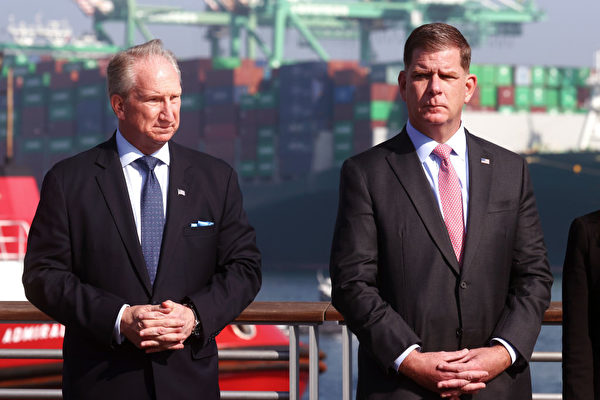The executive director of the Port of Los Angeles, Gene Seroka, announced on April 17th that the port saw a sharp increase in freight volume in the first quarter of 2024, with a promising outlook for the coming months. Seroka stated, “What we are seeing is continued economic growth.”
Despite the recent collapse of the bridge in Baltimore last month, which had a negative impact on the supply chain, the ports of Los Angeles and Long Beach on the west coast seemed to be largely unaffected, with freight volume continuing to increase.
Data from the Port of Los Angeles shows that in just the month of March, the port handled 743,417 standard containers, a 19% increase compared to the same period last year and the eighth consecutive month of year-on-year growth. In the entire first quarter, the port’s freight volume reached 2.38 million standard containers, nearly a 30% increase from the same period in 2023.
During a media briefing on Wednesday, Seroka pointed out that despite some uncertainties surrounding current U.S. interest rates and the latest inflation data, overall economic indicators remain positive. He mentioned, “In the next few months, a strong job market, continued consumer spending, and our ability to handle additional container volume will help move more goods to Los Angeles.”
He anticipates that despite being in the off-peak freight season, the throughput at the Port of Los Angeles in April will exceed 700,000 standard containers, and the healthy trend in freight handling will continue into the summer and peak shipping season.
Looking ahead, the increased freight volume at the Port of Los Angeles may benefit from ongoing security issues in the Red Sea, the drought conditions at the Panama Canal, upcoming labor negotiations at East Coast ports, and the impact of the Baltimore bridge collapse.
The neighboring Port of Long Beach also shows growth, with data revealing that it handled 654,082 standard containers in March, an 8.3% increase compared to the same period last year and marking the seventh consecutive month of year-on-year growth in freight volume.
While the increase in freight throughput is positive, challenges persist for the ports, such as congestion that started during the pandemic.
Seroka explained to reporters that the ports are meant to be transfer facilities, not warehouses. One significant reason for port congestion is people leaving goods at the port for extended periods. He emphasized, “When the next ship comes, the goods pile up, making it difficult to efficiently accommodate incoming vessels at the docks.”
Port officials are addressing this issue by focusing on reducing the time goods spend at the port, expanding available port space, and accelerating ship loading and unloading speeds to prepare for potential increases in incoming goods in the coming months.

